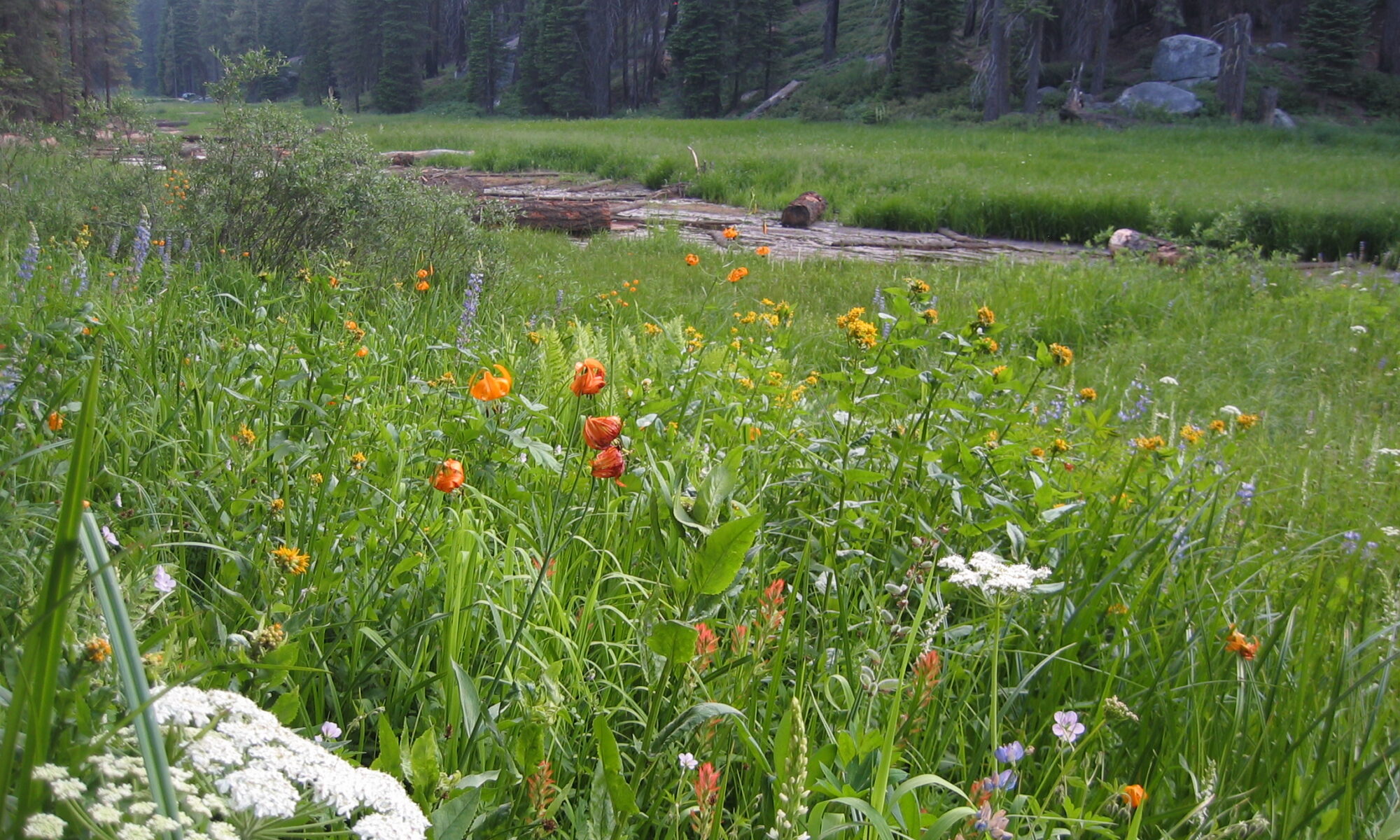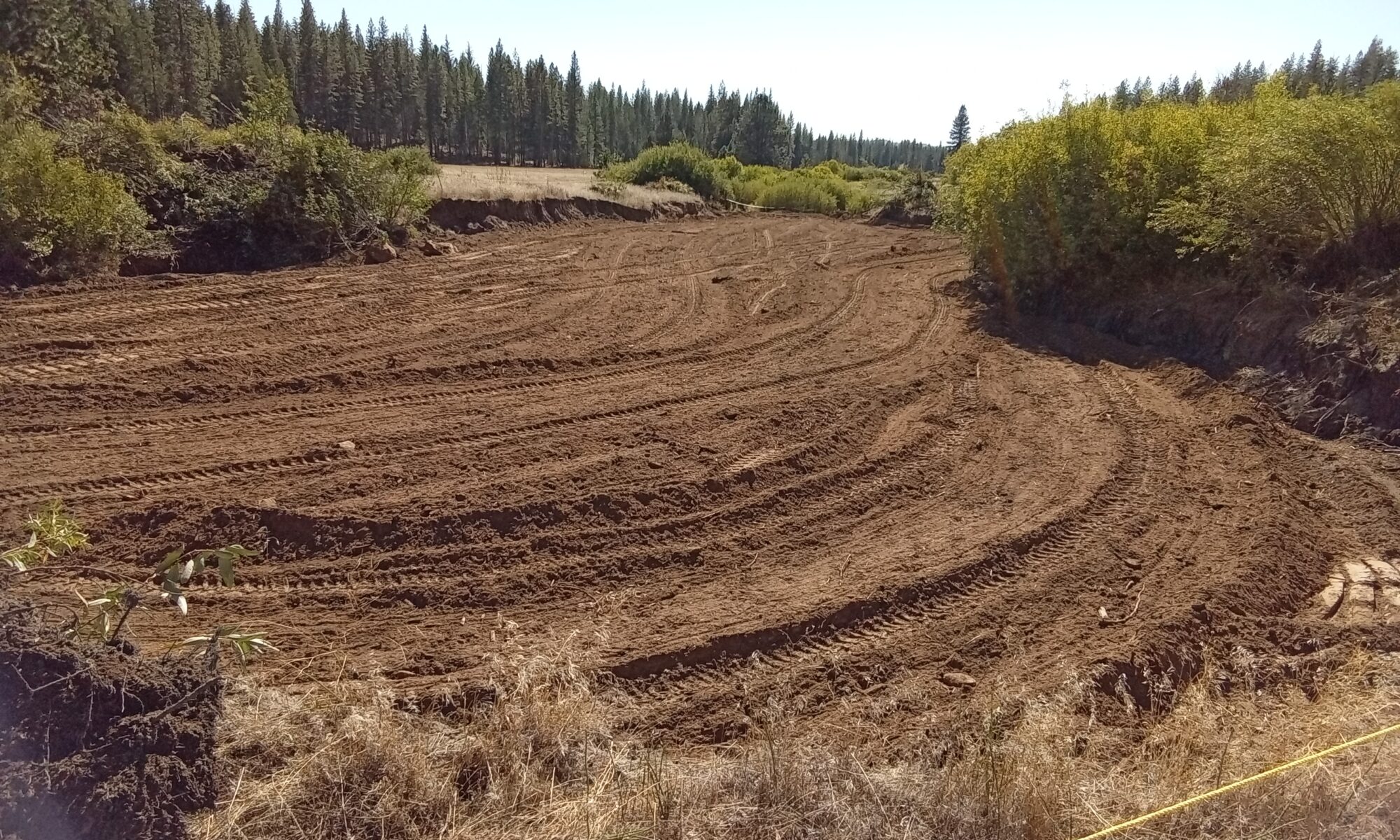Over the coming months the 7000-foot-long, 12-foot-deep, 100-foot-wide erosion gully in Ackerson Meadow will get filled in. Excavators are clearing out the gully to make way for the haul trucks to dump the fill soil that bulldozers will spread out and pack down in layers. As they move down the gully, the excavators pluck out willows by the root ball and set them aside for replanting in the filled surface. The narrow ribbon of wetland sod that fringes the bed of the erosion channel is similarly salvaged. By filling in the gully up to the level of the surrounding meadow, the human-caused change in the shape of the land (the geomorphology) is returned to its natural state. This restored geomorphology allows water to flow as it once did: spread out across the 1000-foot-wide valley as shallow slow flow rather than confined to a deep erosive torrent in a narrow erosion gully. The restored water flow (the hydrology) will rewet the entire valley, growing dense wetland plants where there is currently cheat grass and sand. That wetland vegetation will hold the soil in place, add organic matter underground, and provide habitat and food for a broad array of wildlife. It’s amazing to see the transformation taking place.

Science & stories of mountain meadows
Ecohydrologist researching and restoring wetlands in the Sierra Nevada, Cascades, Coast Ranges, Rockies, Andes, and beyond
